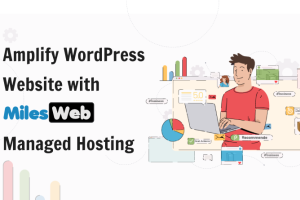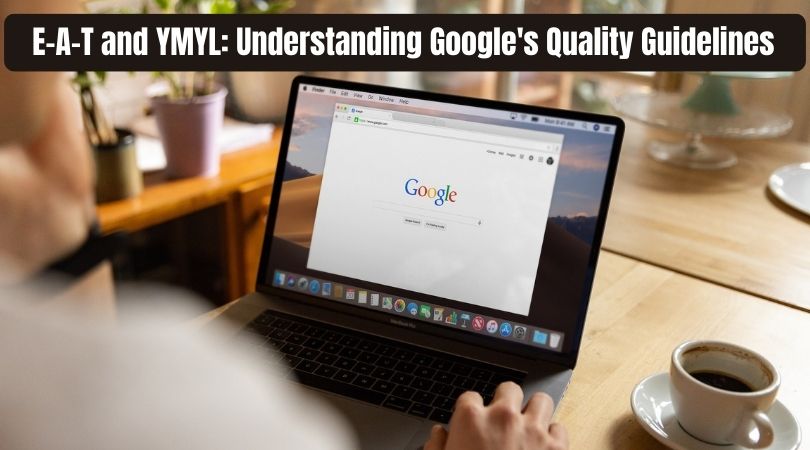For any company that wants to have a presence on the World Wide Web, one thing is crystal clear: Google reigns supreme as the chief arbiter of what’s hot and what’s not.
To sway its favor and ascend the ranks in the ever-competitive realm of online visibility, you must understand Google’s quality guidelines.
And that is often akin to deciphering the holy grail. Two such golden standards are E-A-T (Expertise, Authoritativeness, Trustworthiness) and YMYL (Your Money or Your Life).
Let’s embark on this enlightening journey to decode these mystic acronyms and unearth the pearls of wisdom they hold for website owners and digital denizens.
What is E-A-T?
E-A-T, not to be confused with a hearty meal, stands for Expertise, Authoritativeness, and Trustworthiness. Think of it as the trifecta of website credibility and the value it provides for users.
Google, being its discerning digital guardian, uses E-A-T as its measuring stick for assessing the quality of online content.
Upon assessing websites, Google will use this information to rank sites based on how credible they are. Any site that ranks highly on SERPs will need to pass the E-A-T test. When Google crawls your website, it wants to know if you’re the real deal.
Expertise: The E in E-A-T
Expertise is the bedrock of E-A-T. Google’s algorithms are like expert sommeliers, sniffing out the fine bouquet of knowledge.
If your website deals with medical advice, it better be staffed with bonafide doctors, not backyard quacks. Similarly, if you’re dishing out financial tips, certified accountants must grace your virtual corridors.
Certifications, degrees, and professional experience – these are the key ingredients for the E-A-T recipe.

Authoritativeness Matters
Imagine your website as a lecturer’s podium. Authoritativeness is the air of command and gravitas that the lecturer exudes. In the digital realm, it’s the robust foundation of E-A-T.
Your website gains authority when other respected websites, or, in digital lingo, “high domain authority sites,” give you a nod or a backlink. Backlinks help websites rank higher and inspire confidence in both users and search engines.
This is like getting the academic seal of approval from the Ivy League. Think of it this way: If the New York Times cites your website as the go-to source for parrot training, your site suddenly becomes the paragon of authority in the bird-loving community.
Trustworthiness: The Key to User Hearts
Trustworthiness, the T in E-A-T, builds bridges of trust between you and your users. Users must feel secure in your digital embrace, knowing the information you provide won’t lead them astray.
Trust elements like privacy policies, contact information, and SSL certificates are your hall passes to the realm of user trust.
YMYL: Your Money or Your Life
Now, picture this: Your Money or Your Life (YMYL). Google coined this term to classify websites that can significantly impact a user’s financial well-being or health.
Think medical advice, financial planning, legal counsel, and the like. When it comes to YMYL, Google’s quality guidelines turn into the Sphinx, demanding riddles only the wisest of websites can answer.

Understanding Google’s Quality Guidelines and Applying E-A-T and YMYL to Your Website
Understanding Google’s quality guidelines is just the beginning. The real magic happens when you apply these principles to your website.
Whether you’re a healthcare blog, an investment portal, or a recipe haven, here’s how E-A-T and YMYL can transform your digital presence:
How Google Assesses Websites for YMYL
Google assesses websites for YMYL (Your Money or Your Life) content using a combination of automated algorithms and human evaluators to ensure that users are presented with trustworthy and reliable information, especially when it comes to topics that can significantly impact their financial well-being or health. Here’s a breakdown of how Google tests websites for YMYL:
- Algorithmic Evaluation: Google employs sophisticated algorithms that constantly crawl and index web content.
- Content Quality: Google’s algorithms analyze the content on YMYL pages to determine its quality and accuracy.
- Author Expertise: The algorithm looks for evidence of their qualifications, credentials, and experience in the subject matter.
- Reputation and Authority: The search engine considers factors such as the number and quality of backlinks, mentions in authoritative sources, and user reviews or ratings.
- User Experience: This includes factors like page loading speed, mobile-friendliness, and overall design and usability.
- Security and Privacy: Google checks for the presence of SSL certificates, clear privacy policies, and secure payment gateways.
- User Feedback and Reviews: Negative reviews or complaints about misleading information can raise red flags.
- Expert Human Evaluators: Besides automated algorithms, Google employs a team of human evaluators who manually review and rate websites for quality.
Monitoring and Adjusting: Your Digital Compass
E-A-T and YMYL aren’t set-and-forget principles. They’re your digital compass, guiding you through the ever-shifting currents of the online world. Regularly monitor your E-A-T and YMYL indicators and look for changes in Google’s trends and guidelines.
Look for user feedback, track your rankings, and keep an eye on backlinks. Adjust your course as needed to maintain peak performance.
Improving Your Marketing Skills
When it comes to boosting your marketing analytics skills, E-A-T and YMYL principles aren’t just for SEO wizards.
They’re essential for crafting data-driven strategies that resonate with your audience. With E-A-T, you’ll know what you are working with when it comes to assessing the credibility of your data sources and understanding the expertise of your analytics team.
Meanwhile, YMYL ensures that the insights you derive from your marketing data genuinely impact your audience’s financial well-being or life, making your efforts all the more relevant and meaningful.
And, of course, to truly elevate your analytics game, consider integrating a CRM system to improve efficiency and streamline your data management processes, ultimately helping you deliver more impactful marketing campaigns.

Conclusion: Guiding Lights in the Digital Wilderness
E-A-T and YMYL are guiding lights in a digital terrain teeming with information. They help you navigate the labyrinthine corridors of Google’s algorithms, ensuring your website isn’t just a blip on the digital radar but a beacon of credibility.
Remember, understanding Google’s quality guidelines isn’t a mere checkbox; it’s the roadmap to online success. As you embark on your journey to conquer the digital realm, heed the wisdom of E-A-T and YMYL.
Become the expert, wear the mantle of authority, and embrace the trustworthiness that users crave. In doing so, you won’t just be understanding Google’s quality guidelines but mastering them, propelling your website to the pinnacle of online prominence














